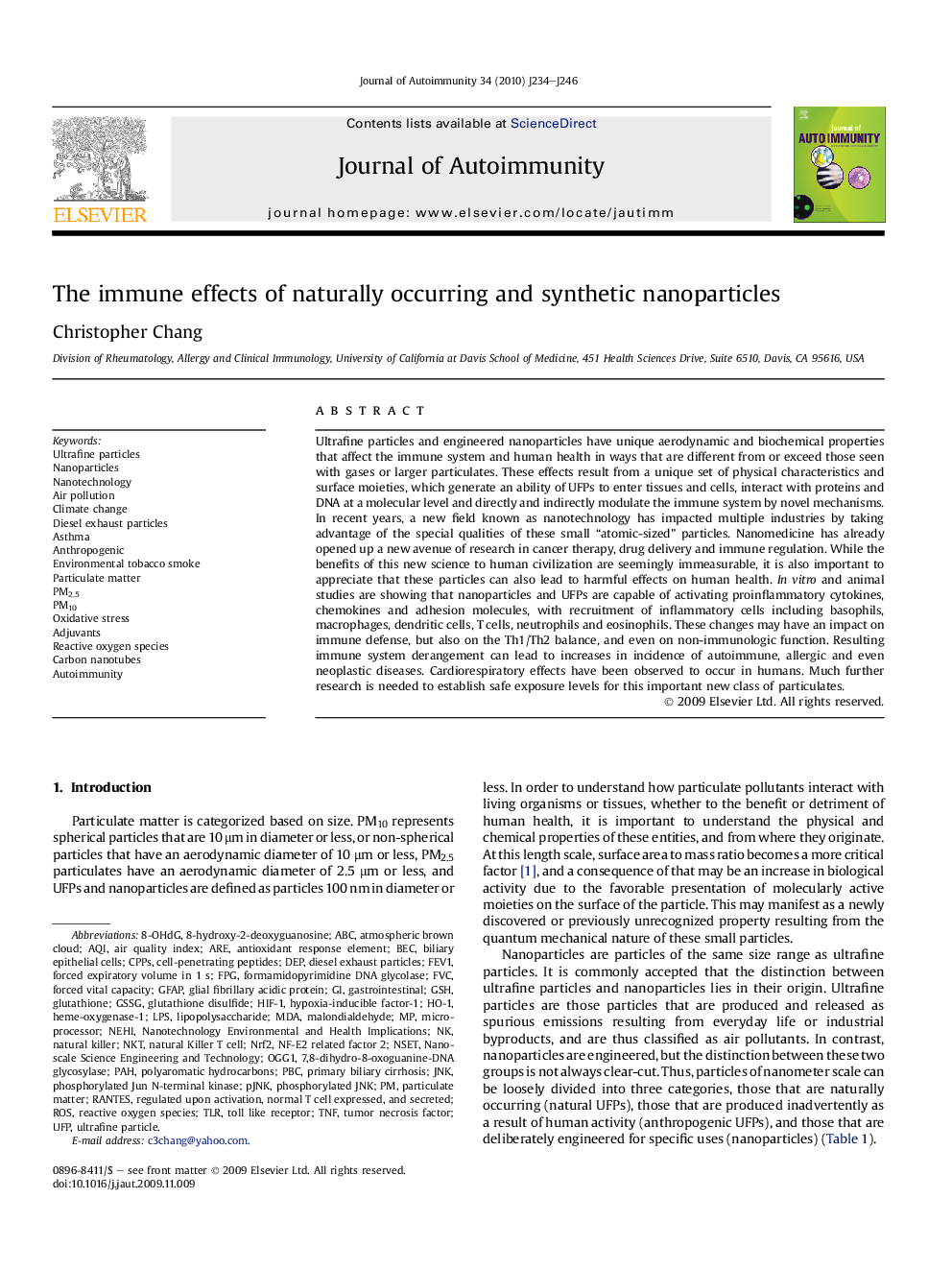| Article ID | Journal | Published Year | Pages | File Type |
|---|---|---|---|---|
| 3368120 | Journal of Autoimmunity | 2010 | 13 Pages |
Ultrafine particles and engineered nanoparticles have unique aerodynamic and biochemical properties that affect the immune system and human health in ways that are different from or exceed those seen with gases or larger particulates. These effects result from a unique set of physical characteristics and surface moieties, which generate an ability of UFPs to enter tissues and cells, interact with proteins and DNA at a molecular level and directly and indirectly modulate the immune system by novel mechanisms. In recent years, a new field known as nanotechnology has impacted multiple industries by taking advantage of the special qualities of these small “atomic-sized” particles. Nanomedicine has already opened up a new avenue of research in cancer therapy, drug delivery and immune regulation. While the benefits of this new science to human civilization are seemingly immeasurable, it is also important to appreciate that these particles can also lead to harmful effects on human health. In vitro and animal studies are showing that nanoparticles and UFPs are capable of activating proinflammatory cytokines, chemokines and adhesion molecules, with recruitment of inflammatory cells including basophils, macrophages, dendritic cells, T cells, neutrophils and eosinophils. These changes may have an impact on immune defense, but also on the Th1/Th2 balance, and even on non-immunologic function. Resulting immune system derangement can lead to increases in incidence of autoimmune, allergic and even neoplastic diseases. Cardiorespiratory effects have been observed to occur in humans. Much further research is needed to establish safe exposure levels for this important new class of particulates.
